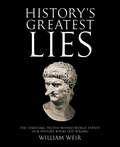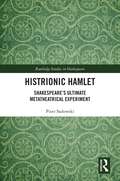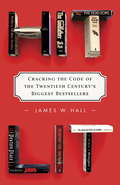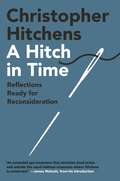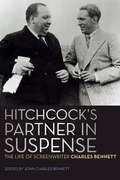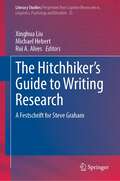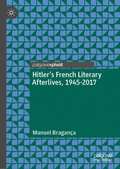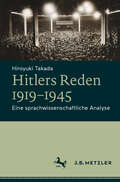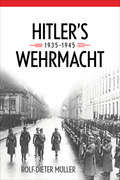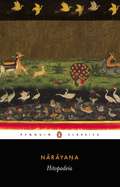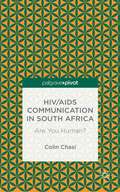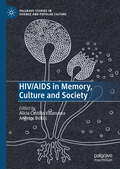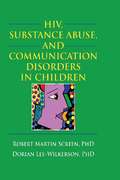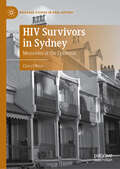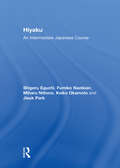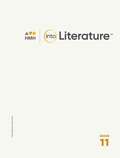- Table View
- List View
History's Greatest Lies: The Startling Truths Behind World Events Our History Books Got Wrong
by William WeirGet the real facts you weren’t taught in school and learn how these myths have survived for so long.Discover the stories behind history’s greatest lies and how—and why—the world’s biggest whoppers have survived textbooks and lesson plans for years. For instance, did you know the conquistador Hernán Cortés wasn’t as bloodthirsty as they say? Neither were the Goths, who were actually the most progressive of the Germanic tribes. Or, that a petty criminal with a resemblance to John Dillinger was probably assassinated instead of the notorious bank robber?In History’s Greatest Lies, Weir sets the record straight through a fascinating examination of historical lies and myths and the true stories behind them. Each chapter pinpoints a misconception held as common truth in history.For example:Emperor Nero did not fiddle as Rome burnedPaul Revere had plenty of help in his midnight rideIn terms of prisons, the Bastille wasn’t all that badWeir explains why each lie persevered in our minds through ulterior motives, responsibility shirking, or exaggerations. You’ll also discover the common threads that make up these falsehoods: the scapegoats, the spin needed to cast undeserving in a better light, and the frightful oversimplification of facts.Praise for History’s Greatest Lies“Weir takes no prisoners—and tells no lies—in his continuously surprising and always fascinating new book. Great falsehoods have shaped history even more than great truths; the enduring fascination of this highly original volume is discovering how much of what we accept for fact is just plain wrong.” —Joe Cummins, author of The War Chronicles: From Chariots to Flintlocks and History’s Greatest Untold Stories
Histrionic Hamlet: Shakespeare's Ultimate Metatheatrical Experiment (Routledge Studies in Shakespeare)
by Piotr SadowskiAccording to psychological research on acting, the histrionic personality consists of a compulsive tendency to play-act, exaggerate emotions, succumb to illusions, to seek attention through speech, body language, and costume, to be seductive and impulsive. An original intervention in the critical history of Shakespeare’s most famous play, Histrionic Hamlet argues that the Danish Prince is a stage representation of just such a personality—a born actor and a drama queen rather than a politician—incongruously thrown in the middle of ruthless high-stakes power struggle requiring pragmatic rather than theatrical skills. Uniquely among other English revenge tragedies, in Hamlet a histrionic protagonist striking a series of gratuitous, baffling, self-indulgent, and counterproductive poses is called upon to carry out a challenging and brutal political task, which he spectacularly and tragically mismanages. Unable to perform on a theatrical stage as a professional actor, the Clown Prince bitterly play-acts anyway, turning all situations into opportunities of pretend play rather than effective political action. In consequence, he wastes tactical advantages over his enemies, endangers himself, and jeopardizes his revenge plan, if ever there was one. Histrionic Hamlet should be of interest to students of Shakespeare, theater practitioners, and anyone interested in human dysfunctional and maladaptive behavior.
Hit Lit
by James W. HallDISCOVER THE SECRETS OF WHAT MAKES A MEGA-BESTSELLER IN THIS ENTERTAINING, REVELATORY GUIDE What do Michael Corleone, Jack Ryan, and Scout Finch have in common? Creative writing professor and thriller writer James W. Hall knows. Now, in this entertaining, revelatory book, he reveals how bestsellers work, using twelve twentieth-century blockbusters as case studies--including The Godfather, Gone with the Wind, To Kill a Mockingbird, and Jaws. From tempting glimpses inside secret societies, such as submariners in The Hunt for Red October, and Opus Dei in The Da Vinci Code, to vivid representations of the American Dream and its opposite--the American Nightmare--in novels like The Firm and The Dead Zone, Hall identifies the common features of mega-bestsellers. Including fascinating and little-known facts about some of the most beloved books of the last century, Hit Lit is a must-read for fiction lovers and aspiring writers alike, and makes us think anew about why we love the books we love. edition.
A Hitch in Time: Reflections Ready for Reconsideration
by Christopher Hitchens&“An extended spa treatment that stretches tired brains and unkinks the usual habitual responses where Hitchens is concerned.&” —James Wolcott in his introduction An outstanding new collection, A HITCH IN TIME is a must have for Hitchens completists and the perfect starting point for understanding one of the most brilliant essayists of all time. Anthologized here for the first time, A HITCH IN TIME is a choice selection of Christopher Hitchens&’s finest reviews, diary entries and essays - along with a smattering of ferocious letters. Familiar bêtes noires—Kennedy, Nixon, Kissinger, Clinton—rub shoulders with lesser-known preoccupations: P.G. Wodehouse, Princess Margaret and, magisterially, Isaiah Berlin. A HITCH IN TIME is a banquet of entertaining stories ranging from his thoughts on Salman Rushdie to being spanked by Margaret Thatcher in The House of Lords and the night he took his son to the Oscars. The broad scope and high caliber of Hitchens&’ essays allows his work to transcend the occasion for which it was written and continues to be essential reading. Along with an introduction by James Wolcott, A HITCH IN TIME recaptures the brilliance of Hitchens - barnstorming, cauterizing, and ultimately uncontainable.
Hitchcock's Partner in Suspense: The Life of Screenwriter Charles Bennett (Screen Classics)
by Charles BennettThe colorful life and creative career of the writer behind six of Hitchcock&’s thrillers: &“An intriguing and revealing story.&” —Times Literary Supplement With a career that spanned from the silent era to the 1990s, British screenwriter Charles Bennett lived an extraordinary life. His experiences as an actor, director, playwright, film and television writer, and novelist in both England and Hollywood left him with many amusing anecdotes, opinions about his craft, and impressions of the many famous people he knew. Among other things, Bennett was a decorated WWI hero, an eminent Shakespearean actor, and an Allied spy and propagandist during WWII, but he is best remembered for his commercially and critically acclaimed collaborations with directors Sir Alfred Hitchcock and Cecil B. DeMille. The fruitful partnership with Hitchcock began after the director adapted Bennett&’s 1929 play Blackmail as the first British sound film. Their partnership produced six thrillers: The Man Who Knew Too Much, The 39 Steps, Sabotage, Secret Agent, Young and Innocent, and Foreign Correspondent. In this witty and intriguing book, Bennett discusses how their collaboration created such famous motifs as the &“wrong man accused&” device and the MacGuffin. He also takes readers behind the scenes with the Master of Suspense, offering his thoughts on the director&’s work, sense of humor, and personal life. Featuring an introduction and additional biographical material from Bennett&’s son, editor John Charles Bennett, Hitchcock&’s Partner in Suspense is a richly detailed narrative of a remarkable yet often-overlooked figure in film history.
The Hitchhiker's Guide to Writing Research: A Festschrift for Steve Graham (Literacy Studies #25)
by Xinghua Liu Michael Hebert Rui A. AlvesThis book brings together the work of established scholars from around the world to celebrate and honor the many ways in which Steve Graham has contributed to the advancement of teaching and researching writing. Focusing on writing development and writing instruction in different contexts of education, original contributions in this book critically engage with theoretical and empirical issues raised in Steve Graham’s influential body of work and significantly extend our understandings of the importance of writing in developing learners’ literacy and the roles of writing in teaching and learning processes.This book is organized around themes central to Steve Graham's work, including theories and models of writing, effective instructional methods in teaching writing, surveys on teaching and learning writing, and systematic review studies on writing. Apart from regular chapters, the book also features personal and scholarly reflections revealing the powerful ways in which Steve Graham’s work has influenced our thinking in the field of writing research and continues to open up new avenues for future research endeavors.
Hitler's Followers: Studies in the Sociology of the Nazi Movement (Routledge Library Editions: Nazi Germany and the Holocaust)
by Detlef MuhlbergerWhen originally published in 1991, this book was the first systematic, detailed evaluation of the social structure of the Nazi Party in several regions of Germany during its so-called Kampfzeit phase. Based on extensive archival material, much of it left untouched since the end of the war until Detlef Mühlberger uncovered it, the book demonstrates that the Nazi Party and its major auxiliaries, the SA and the SS mobilized support which was remarkably heterogeneous in social terms. The author reveals that in addition to followers from the middle and upper social classes the Nazi Party enjoyed strong support among the lower class and it was indeed, as it claimed to be a people’s party, or Volkspartei.
Hitler’s French Literary Afterlives, 1945-2017
by Manuel BragançaThis book analyses the successive appearances of Adolf Hitler in French fiction between 1945 and 2017. It discusses why, unlike what has been observed in the US and in the UK, it has proven problematic for French novelists to write about Hitler in their numerous fictional explorations of the Second World War. It examines the literary and ethical challenges of including historical characters such as Hitler in fiction, and demonstrates how these challenges evolved over time as memories of the Second World War also evolved in France.
Hitlers Reden 1919–1945: Eine sprachwissenschaftliche Analyse
by Hiroyuki TakadaHitlers Reden spielten eine entscheidende Rolle im Prozess der nationalsozialistischen „Machtergreifung“ und der späteren Durchsetzung ihrer Politik. Das Buch untersucht die Gründe für die enorme Wirkung von Hitlers Auftritten, indem es die 1,7 Millionen Wörter, die die Reden umfassen, systematisch und in ihrer Entwicklung analysiert. Unter Einbeziehung der historischen und technikgeschichtlichen Hintergründe sowie detaillierten Beschreibungen von Hitlers Auftreten, seinen Gesten und rhetorischen Mitteln entsteht so eine Gesamtdarstellung von Hitlers Entwicklung als Redner – von den euphorisierenden Anfängen in den Bierkellern bis zu den kaum mehr beachteten Einlassungen am Ende des Krieges.
Hitler's Wehrmacht, 1935–1945 (Foreign Military Studies)
by Rolf-Dieter MüllerAn &“impressively comprehensive&” study of the Nazi military and its culpability in war crimes by &“one of the foremost historians of World War II&” (Stephen G. Fritz, author of Ostkrieg). Since the end of World War II, Germans have struggled with the legacy of the Wehrmacht—the unified armed forces mobilized by Adolf Hitler in 1935. Historians have vigorously debated whether the Wehrmacht's atrocities represented a break with the past or a continuation of Germany's military traditions. Now available for the first time in English, this meticulously researched yet accessible overview by eminent historian Rolf-Dieter Müller provides a comprehensive analysis of the Wehrmacht, illuminating its role in the horrors of the Third Reich. Müller examines the Wehrmacht's leadership principles, organization, equipment, and training, as well as the front-line experiences of soldiers, airmen, Waffen SS, foreign legionnaires, and volunteers. He skillfully demonstrates how state-directed propaganda and terror influenced the extent to which the militarized citizenry—or Volksgemeinschaft—was transformed under the pressure of total mobilization. Finally, Müller evaluates the army's conduct during the war, from blitzkrieg to the final surrender and charges of war crimes. Brief acts of resistance, such as an officers' &“rebellion of conscience&” in July 1944, embody the repressed, principled humanity of Germany's soldiers. But ultimately, Müller concludes, the Wehrmacht became the &“steel guarantor&” of the criminal Nazi regime.
The Hitopadesa
by M NarayanaComposed between 800 and 950 AD, Narayana's Hitopadesa is one of the best-known of all works in Sanskrit literature. A fascinating collection of fables, maxims and sayings in verse, it combines a wide variety of writings from earlier authors in one volume - a 'garden of pleasing stories' created to provide guidance, wisdom and political advice to the reader. With elegance and great humour, Narayana weaves a framework for the classic tales, here narrated by animals who quote from and reflect on stories from the Pancatantra and other traditional sources. At once an anthology of folk wisdom and an original and satirical work in its own right, the Hitopadesa has been deeply admired and widely read for more than a thousand years for its humorous and profound reflections on human lives, loves, follies and philosophies.
HIV/AIDS Communication in South Africa: Are You Human?
by Colin ChasiEven though sub-Saharan Africa is the region most affected by HIV/AIDS in the world, no new theories have been discovered, and questions about life and death are ignored. This book uses certain selected communication practices to offer the foundations of an African theory of communication, applicable to the crisis of HIV/AIDS.
HIV/AIDS in Memory, Culture and Society (Palgrave Studies in Science and Popular Culture)
by Alicia Castillo Villanueva Angelos BollasThis volume examines the role of culture in developing social, cultural and political discourses of HIV/AIDS from a contemporary viewpoint. In doing so, the memory of HIV/AIDS is a powerful tool to examine representations of the past and connect them with future debates. This reassessment of HIV/AIDS explores the most appropriate way to come to terms with a past that involved a negative, stigmatised and marginalised representation. Therefore, remembering plays a key role in generating collective memory, which allows for the exchange of mnemonic content between individual minds, creates discourses on memory and commemoration, and disseminates versions of the past that may affect the representation of HIV/AIDS in the future. Indeed, rewriting about the past also means assessing our responsibility towards the present and the potential of transmission to future generations, especially in times of pandemics.
HIV, Substance Abuse, and Communication Disorders in Children
by R. Dennis Shelby Robert M. ScreenMake sure every child gets a chance to be heardHIV, Substance Abuse and Communication Disorders in Children examines the language problems of young children from special populations. Essential as a textbook for graduate and upper-level undergraduate studies and as a reference resource, this unique book presents up-to-date research and compelling case studies that illustrate how prenatal exposure to drugs, alcohol, and HIV can affect a child in utero and continue to handicap its development after birth. Each chapter includes discussion threads and review questions to promote critical thinking and clinical problem-solving skills in the classroom.HIV, Substance Abuse and Communication Disorders in Children looks at the negative impact a mother&’s lifestyle practices can have on her developing child with a nod toward the significant prevalence of HIV and substance abuse in today&’s society. Some estimates place the number of infants born after prenatal exposure to illicit drugs as three-quarters of a million-every year. When alcohol is added, the figure rises to more than 1 million. This powerful book focuses specifically on the serious consequences of alcohol, marijuana, cocaine, and crack cocaine abuse, including poor language development and speech delays, limited vocabulary, the inability to make their needs known, poor articulation, the inability to follow commands, limited expressive language skills, and the inability to understand the real meaning of words and generalize them. And of the nearly 5,000 children in the United States living with AIDS, almost all will struggle with speech production and communication disorders as the disease affects their brain, spinal cord, and central nervous system. HIV, Substance Abuse and Communication Disorders in Children examines: the effect of drugs on the brain pregnancy and drug use trends common drugs of abuse Kosakoff&’s syndrome fetal alcohol syndrome (FAS) among Native Americans and African Americans neurologic sequellae speech and language intervention rehabilitation considerations treatment and family counseling and much moreHIV, Substance Abuse and Communication Disorders in Children is essential for graduate and undergraduate students working with language disorders in special populations.
HIV Survivors in Sydney: Memories of the Epidemic (Palgrave Studies in Oral History)
by Cheryl WareInner-city Sydney was the epicenter of gay life in the Southern hemisphere in the 1970s and early 1980s. Gay men moved from across Australasia to find liberation in the city’s vibrant community networks; and when HIV and AIDS devastated those networks, they grieved, suffered, and survived in ways that have often been left out of the historical record. This book excavates the intimate lives and memories of HIV-positive gay men in Sydney, focusing on the critical years between 1982 and 1996, when HIV went from being a terrifying unidentified disease to a chronic condition that could be managed with antiretroviral medication. Using oral histories and archival research, Cheryl Ware offers a sensitive, moving exploration of how HIV-positive gay men navigated issues around disclosure, health, sex, grief, death, and survival. HIV Survivors in Sydney reveals how gay men dealt with the virus both within and outside of support networks, and how they remember these experiences nearly three decades later.
Hiyaku: An Intermediate Japanese Course
by Shigeru Eguchi Fumiko Nazikian Miharu Nittono Keiko Okamoto Jisuk ParkHiyaku: An Intermediate Japanese Course provides a progressive intermediate course in Japanese, incorporating modern teaching methods and practicing all four language skills. Hiyaku provides content-based instruction, with authentic and semi-authentic dialogues and readings, all carefully selected to instruct and inspire students as they learn Japanese. Key features of the textbook include: highly structured chapters, beginning with warm-up exercises followed by focused practice of each of the four skills gradual introduction to increasingly authentic materials content taken from original Japanese sources such as books, TV programs, magazines, newspapers and websites extensive audio material provided as FREE MP3 files on a companion website instructor’s materials, including PowerPoint files provided through the companion website. Hiyaku does not simply teach language and basic cultural points: it also helps students gain a holistic understanding of Japanese society and history, and provides the necessary foundation for the advanced study of Japan and its language.
HMH Into Literature™, Grade 10
by Kylene Beers Martha Hougen Tyrone C. HowardNIMAC-sourced textbook
HMH Into Literature™, Grade 10 (Into Literature)
by Kylene Beers Martha Hougen Elena IzquierdoNIMAC-sourced textbook
HMH Into Literature™, Grade 11
by Kylene Beers Martha Hougen Tyrone C. HowardNIMAC-sourced textbook
HMH Into Literature™, Grade 11, Grammar Practice
by Houghton Mifflin HarcourtNIMAC-sourced textbook
HMH Into Literature™, Grade 12
by Kylene Beers Martha Hougen Tyrone C. HowardNIMAC-sourced textbook
HMH Into Literature™ [Grade 6] (Into Reading)
by Kylene Beers Martha Hougen Elena IzquierdoNIMAC-sourced textbook
